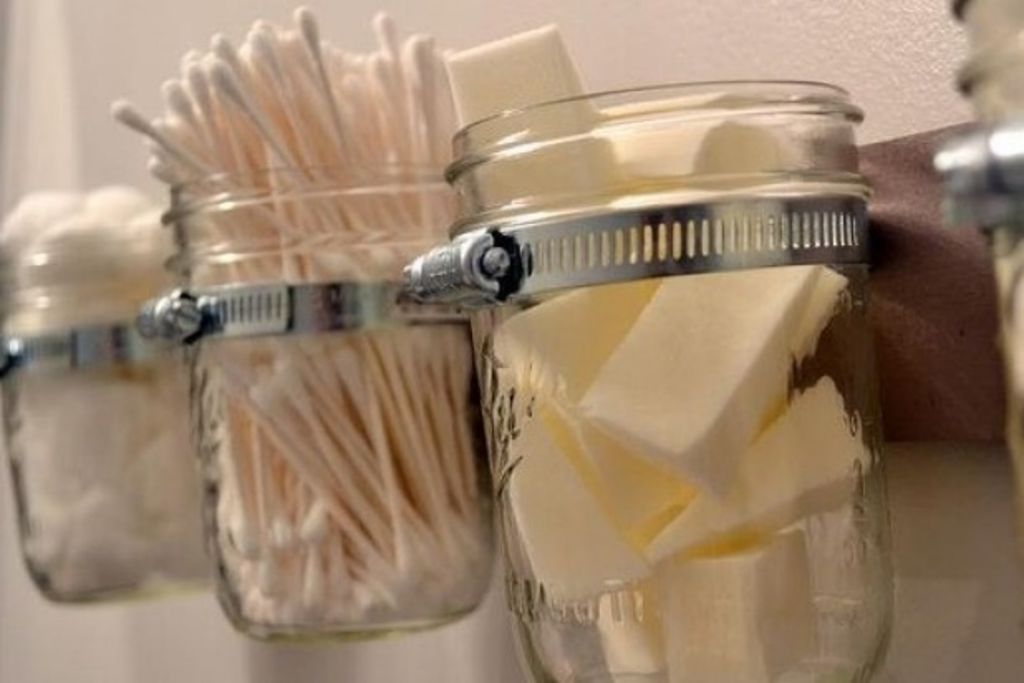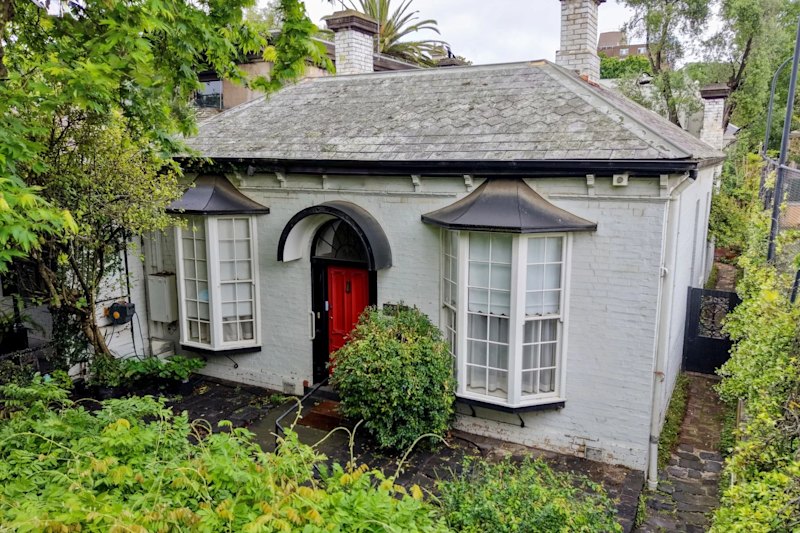What happens when you attempt to recreate six popular home trends

We all have a burning desire to be the earthly homebodies who eat home-cooked food every night and make macrame plant pots while living a no-waste lifestyle.
Every few months there’s a new trend inspiring homemakers to attempt to turn their lives into the pages of a brochure. Yet the truth is, most projects don’t turn out quite the way you’d imagine.
Cleaning ‘naturally’
Those of us without the clean gene, or a desire to keep everything spotless all the time, will surely have raised our eyebrows at the chemical-free cleaning trend … before jumping straight on the bandwagon and trying it ourselves. The idea is fairly simple – using chemical-free cleaners, usually home-made, to ensure your home is environmentally sound and not terrible for your health.
Armed with spray bottles, eucalyptus oil and far too much baking soda and apple cider vinegar, I set about making my home a better place. If you have plenty of free time and no animals in the home, this could work. Certainly, the eucalyptus oil did wonders for keeping ants away and is now a must-have under the sink.
But an experiment with bay leaves as a pantry moth deterrent proved drastically unsuccessful and baking soda turned out to be no good for situations when your dog has an accident on the carpet.
In no time, we were back to using our cruelty-free store-bought brands.
Recommendation: Know what’s practical for you, but don’t be scared to try new things. You never know what you might learn.
Mason jar pantry storage
 The plan was to have something like this. The reality was far different. Photo: Supplied
The plan was to have something like this. The reality was far different. Photo: Supplied
 The chaos in my pantry as a result of the mason jar trend. Photo: Supplied
The chaos in my pantry as a result of the mason jar trend. Photo: Supplied
From the IKEA catalogue to everyone on Pinterest, mason jars as storage devices have taken off. But if you’re someone who cannot tell the difference between three white substances in three identical glass jars, then this is not the household trend for you.
As it turns out, I have a nose for determining the subtle differences between egg replacer, garlic powder and cornflour – but my partner does not … leading to some very interesting dinner and dessert options. Yes, you could label those jars – but the second you do that, you lose the rustic minimalistic look you were going for. Instead, we rely on my constant presence in the kitchen and needing to taste everything before we use it.
While storage jars are good for several reasons, including the ability to see how much you have of what pretty quickly, unless you’re not a fan of cooking or you’re the sort of person that likes simple fare, you’ll suddenly need a ridiculous number. Within a week, more than 15 jars were filled to the brim in the pantry and it didn’t even scratch the surface of the jar-able ingredients.
Recommendation: Keep the mason jars for smoothies, salads, fancy pen holders and assorted pretentious activities. Leave them out of the pantry.
Knitting a throw
Crocheting and, its poor lumpy cousin, knitting, have become popular pastimes in the past 24 months. Knitting classes are creeping up in popularity, boasted to be a de-stressor and a way to use your hands to make something beautiful.
But the idea is far more attractive than the reality, particularly if you’re a novice knitter.
 Knitting skills that leave a lot to be desired. Not fit for human consumption. Photo: Supplied
Knitting skills that leave a lot to be desired. Not fit for human consumption. Photo: Supplied
It turns out YouTube and my mum were not terrible places to start to learn how to knit properly, but I do have two left hands and an ability to get bored and frustrated pretty quickly. It has now been six months and after knitting 40 painstaking squares in assorted colours, it’s a struggle to stay motivated. Now that I am ready to seam them together, I’ve realised they’re all different sizes, have gained or lost stitches and are all at different tensions. Not exactly ideal, to say the least.
I’ll push on and turn it into a throw (for our cats, to be kept away from any human’s line of vision) but it does seem a lot of effort, and money spent on yarn, for little reward.
Recommendation: Start small, try knitting a scarf instead. If you aren’t in it for the long haul, consider buying something handmade by a real knitter.
Growing vegies
Part of the Great Australian Dream of owning a house with a yard is to have a little vegetable patch where, after a little bit of water, soil and magic, you can pick fresh tomatoes and pumpkins. Suckered into this line of thinking, I bought myself a bag of soil, seeds, fertiliser, some seedling plant pots, a spade and some gardening gloves and started getting excited to have fresh vegetables.
Cue some of Sydney’s hottest days, followed by a week of storm and rain, and a dose of “I don’t want to go in the garden when it’s muddy, dark and it has been a busy day at work” and you’ll end up right here – no growing seedlings, not even a hint of life.
After this scenario failed, we went for the simple option. An “instant noodle” style plant, with soil and seeds in the pot already and an instruction to just add water and leave on the windowsill. After seven weeks and the jalapeno plant is growing. It’s far from a bountiful harvest, but it’ll do.
Recommendation: Start small with something low-maintenance if you lack green thumbs.
Composting
Reducing waste by creating your own plant fertiliser has a nice ring to it. It’s eco-friendly and pretty low effort. However, a trip to a gardening store to buy an official compost bin revealed they can cost hundreds of dollars.
Using some online inspiration, I picked up a dustbin for $20, drilled some holes in and got about composting. Success! The bin is doing its thing – mulching vegetables, grass and cardboard into plant fertiliser, albeit taking much longer than expected to do so.
But then, what’s the point in having compost when the vegetable patch you started composting for has fallen flat? Now I realise all I am doing is keeping a tub of rotting vegetables in my yard. Fancy.
Recommendation: Put the compost on flowerbeds or find a neighbour who might be in need of some.
Pickling vegetables
While the intention was to eventually pickle the home-grown vegetables, that doesn’t mean all the fun was lost. Using store-bought tomatoes and cucumbers, an unhealthy amount of vinegar and salt, plus assorted spices, garlic and oils, I was inspired by all the promoted health benefits of sauerkrauts and home-pickled vegetables.
 Pickling isn’t as hard as it seems. Getting other people to eat them is half the battle. Kombucha, pickled cucumbers, chard chutney and Russian tomatoes. Photo: Supplied
Pickling isn’t as hard as it seems. Getting other people to eat them is half the battle. Kombucha, pickled cucumbers, chard chutney and Russian tomatoes. Photo: Supplied
This was a partial success. They tasted great and added something extra to our meals. But they did take a long time and, as it turns out, pickles of the home-made persuasion aren’t quite as popular as you’d imagine.
Brewing kombucha (to the left of the photograph) using a scoby, a symbiotic culture of bacteria and yeast, is as attractive as it sounds – not very. It looks like you’re housing something life-threatening right next to your food and makes people question the cleanliness of the rest of your pickles. The idea of having food out of the fridge will also be frightening to some, even when you explain the airtight containers, sterilisation process and the salt content.
Recommendation: Just serve the pickles and don’t be offended if no one else wants to eat them.
We recommend
We thought you might like
States
Capital Cities
Capital Cities - Rentals
Popular Areas
Allhomes
More
- © 2025, CoStar Group Inc.







